Exploring WP&YR railway history in Skagway
We continue to have a wonderful Fall (or Early Winter), and on Monday, with a fairly good weather forecast for both Whitehorse and Skagway, I decided to take a drive to Skagway. I was away from the house just before the 09:15 sunrise, expecting some good light on the mountains, but the light turned out to be flat and uninspiring photographically. My wanders once I got to Skagway did, however, turn up some interesting subjects that require some research.
I enjoy going down the Railroad Dock, which is such a quiet place once the cruise ships are gone. I’d never been down the trail at the end of it, nor even heard anyone mention it, so we went for a look.
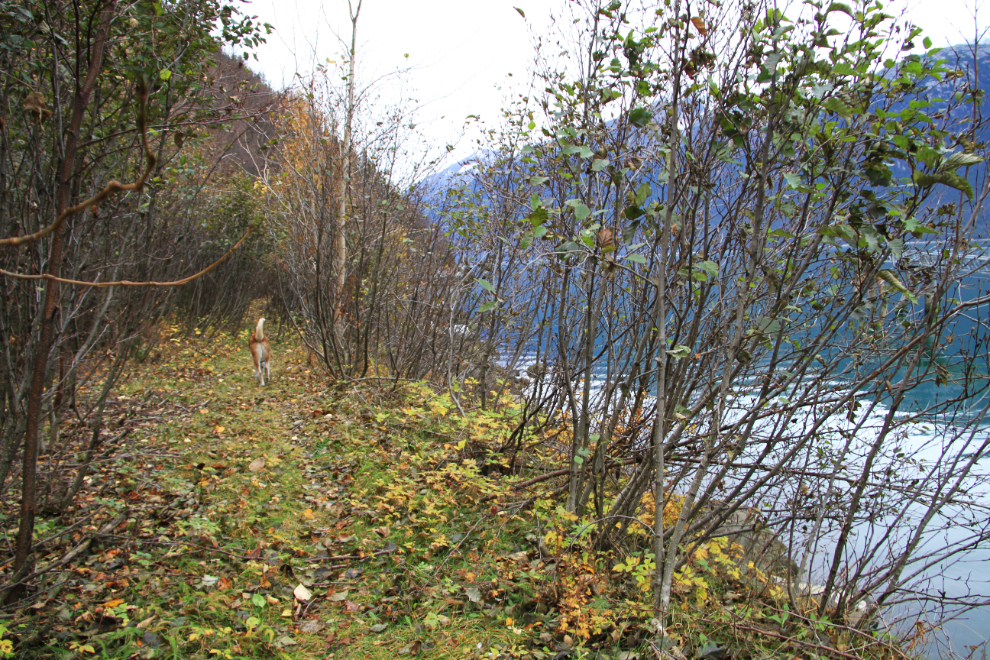
There’s a new dock off the end of the Railroad Dock, and sitting at it was a fuel barge that I didn’t know existed, the “White Pass I”. I had to pull up Google Earth to make sure that the dock actually is new and that I hadn’t just not noticed it 🙂

Another surprise buried in the forest deeply enough that it would be hard to spot when the trees are in leaf. A massive winch system – my thought was that it must have been used for coal unloading
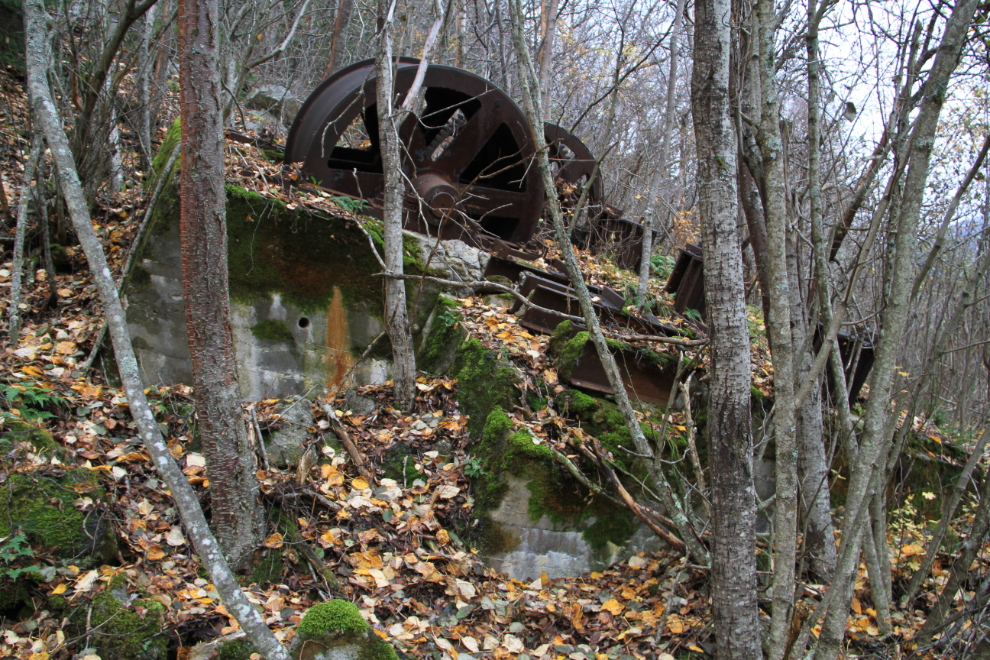
The winch drum is about 5 feet in diameter. When I got home I queried the railway about it on their Facebook page. Railway historian Carl Mulvihill was in their office the next day, and they asked him about it. He said the winch was used to haul railway cars loaded with copper from the Whitehorse Copper Belt to a large building called the Ore Bunker, where the ore was stored in large bins before being shipped via freighter to Tacoma, Washington. I was hoping to see the winch in a photo of the Ore Bunker – no luck there, but the 1909 Journal of the Canadian Mining Institute gives a good description of the entire ore-loading operation. Thanks to railfan Bruce Pryor for posting both the photo and pdf of the Journal on his large Web site.
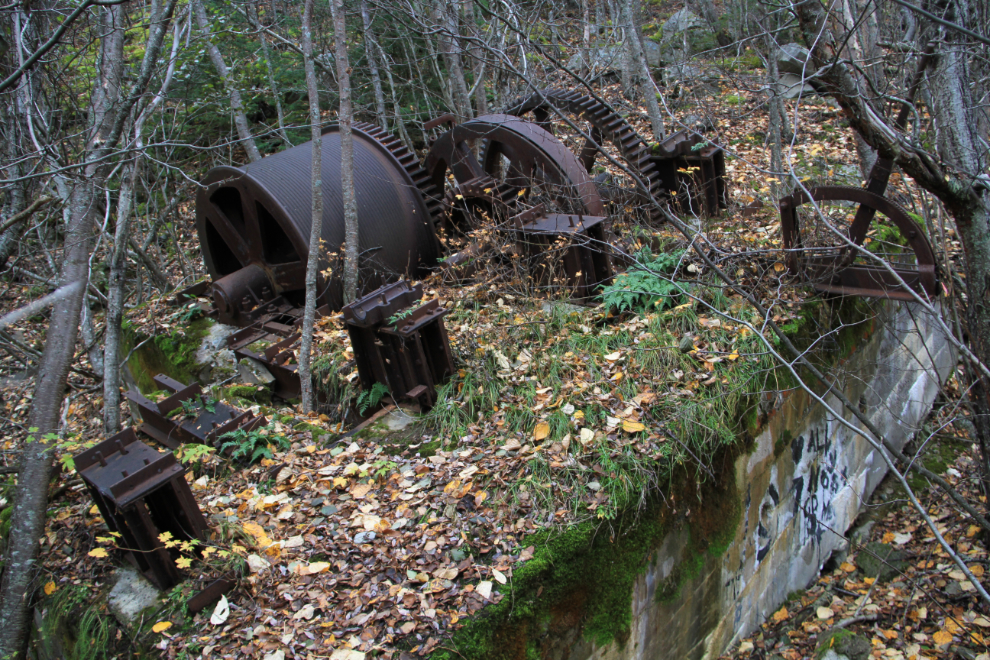
The trail didn’t go much further, ending at a large rock slide. On the way back to the dock, I spotted some pipe and wooden beams about 50 feet up the bank and climbed up for a closer look.
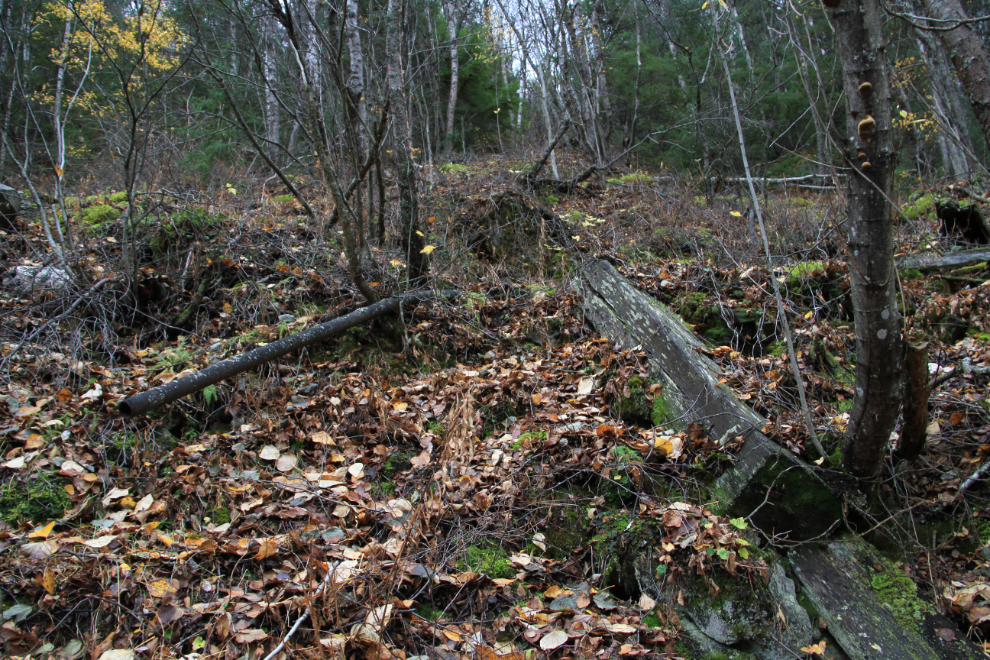
Looking across the ruins of what I now know were the ore loading facilities, with one pair of rail lines to the right. Over a century of forest growth and perhaps landslides have changed the slope’s look dramatically, but armed with a copy of the Journal, I’ll be going back down, to climb higher up the slope.
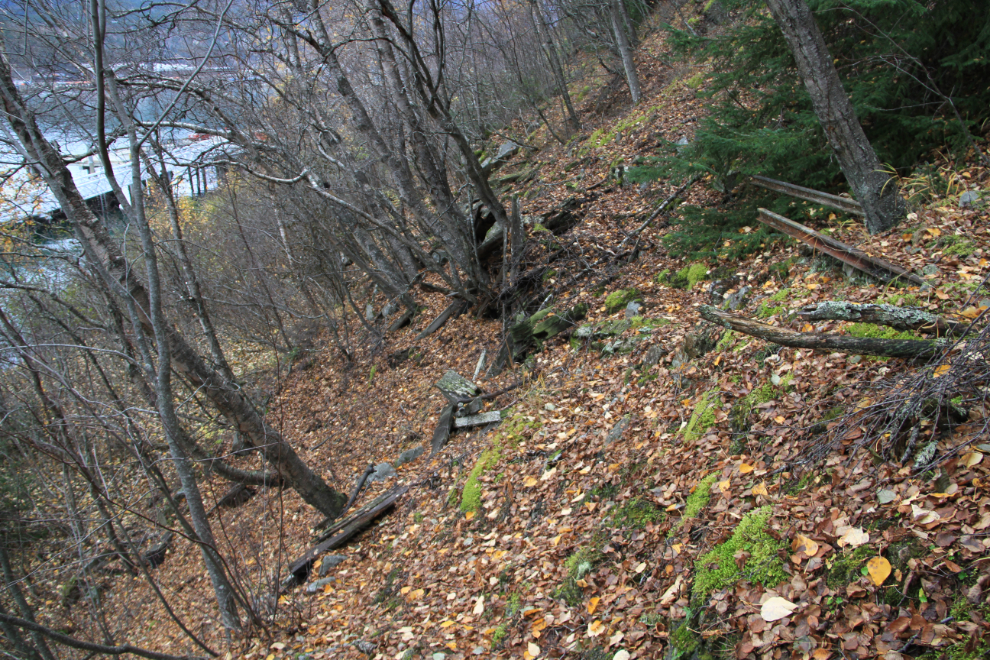
A found a couple of National Park Service survey markers, so the site has been mapped, and their office will probably be my next stop.
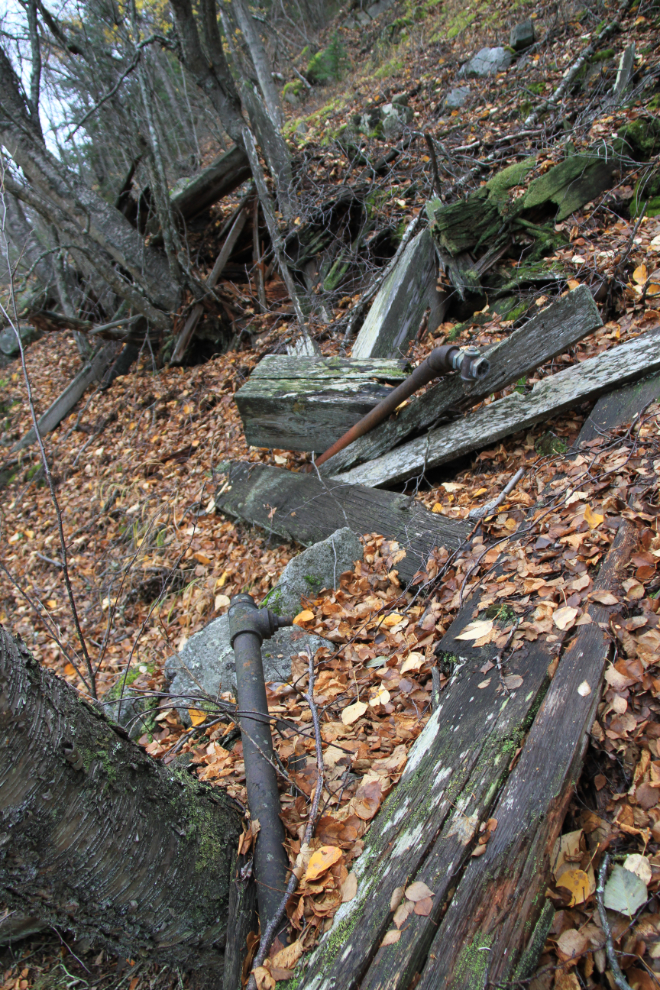
Following another long-abandoned line that’s well hidden by vegetation in the summer.
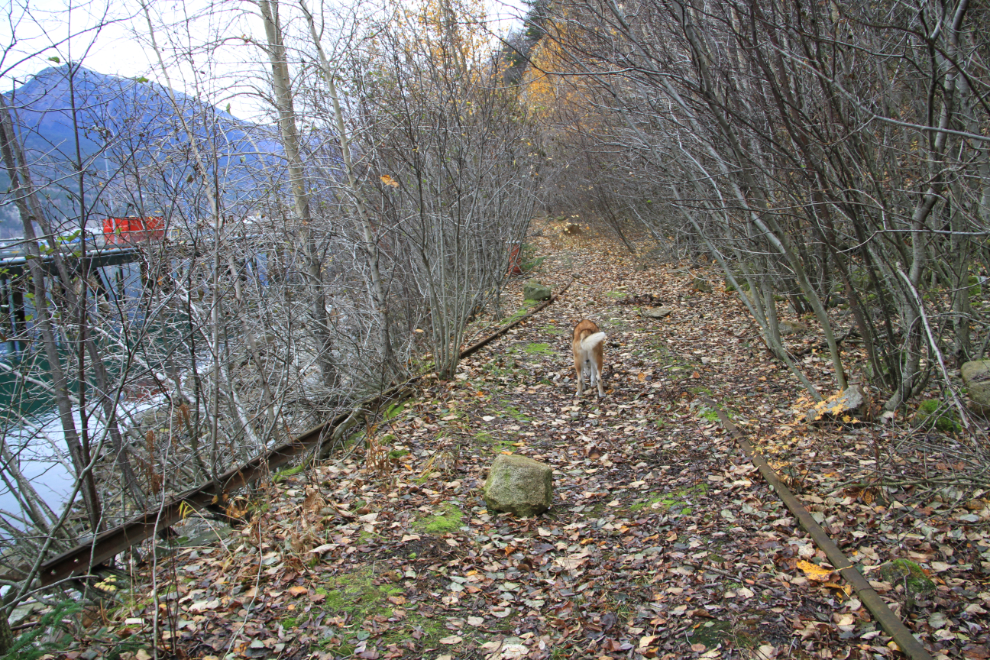
That line led us to the start of the main part of the “ship signature” wall. A close reading of the signatures that go back about 85 years brings up a few interesting stories. Here’s a good example – when Holland America’s 4-year-old cruise ship Prinsendam visited Skagway in 1977, Captain Cornelius Wabeke was in command. He was also in command when the Prinsendam caught fire and sunk in the Gulf of Alaska on October 11, 1980 – see the story of that incredible rescue mission (all 520 passengers and crew members were saved) here.
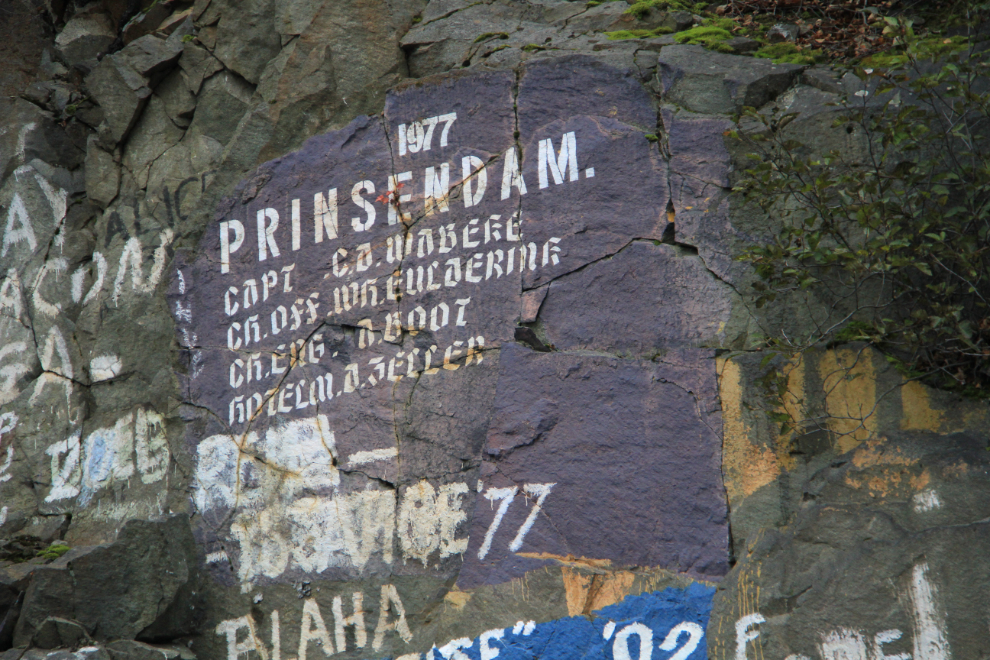
When the lovely Canadian Pacific Railway cruise ship Princess Kathleen visited Skagway in 1949, Captain Graham 0. Hughes was in command. Although not on the bridge, he was still in command on September 7, 1952, when the Princess Kathleen struck a reef between Skagway and Juneau and sunk.
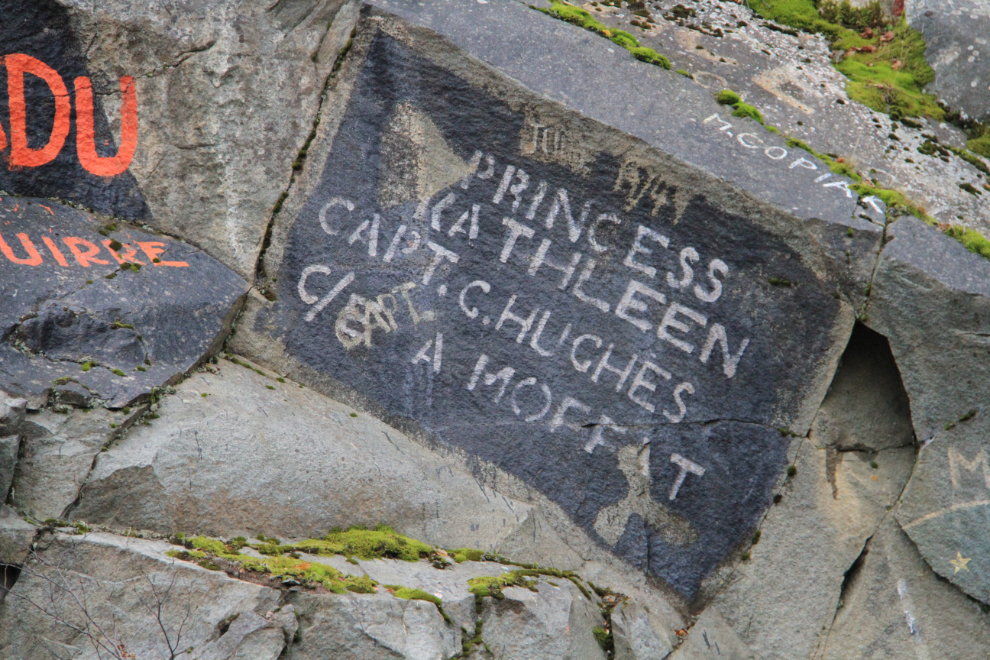
My planned photography hadn’t come to pass in the way I’d expected, but Monty was getting lots of walking, and my head was thoroughly in the past, so our next stop was at the yard where the railway’s 79 passenger cars are stored.
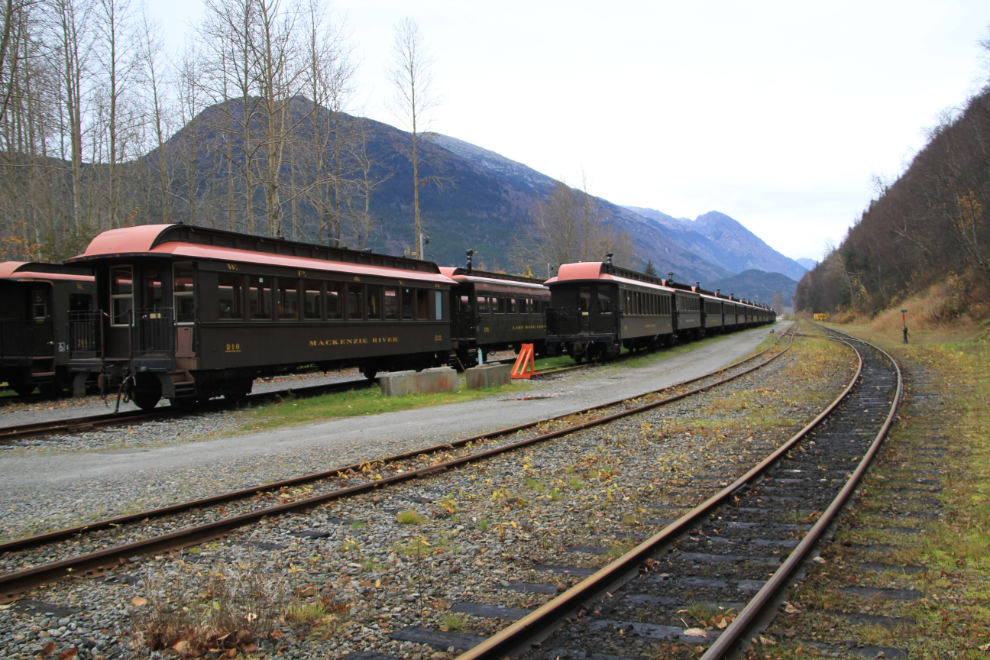
These cars have been built over a 129-year span. Car 244, the Lake Emerald, is the oldest, having been built in 1883. It’s 44 feet long and can seat up to 38 people.

Car 214, the Lake Spirit, was built in 1899 but looks like a brand-new coach. Before becoming a tourist railway 30-odd years ago, the White Pass & Yukon Route was a part of so many major events in Yukon history, and I enjoy thinking about what part a specific car may have played. The Lake Spirit may have taken Yukoners off to fight in the Boer War, or the First or Second World Wars. It may have carried some of the 343 people who died when the steamship Princess Sophia hit a reef and sank on October 25, 1918. And it certainly would have been part of countless happier occasions, carrying people from around the world to a new life in the Yukon.
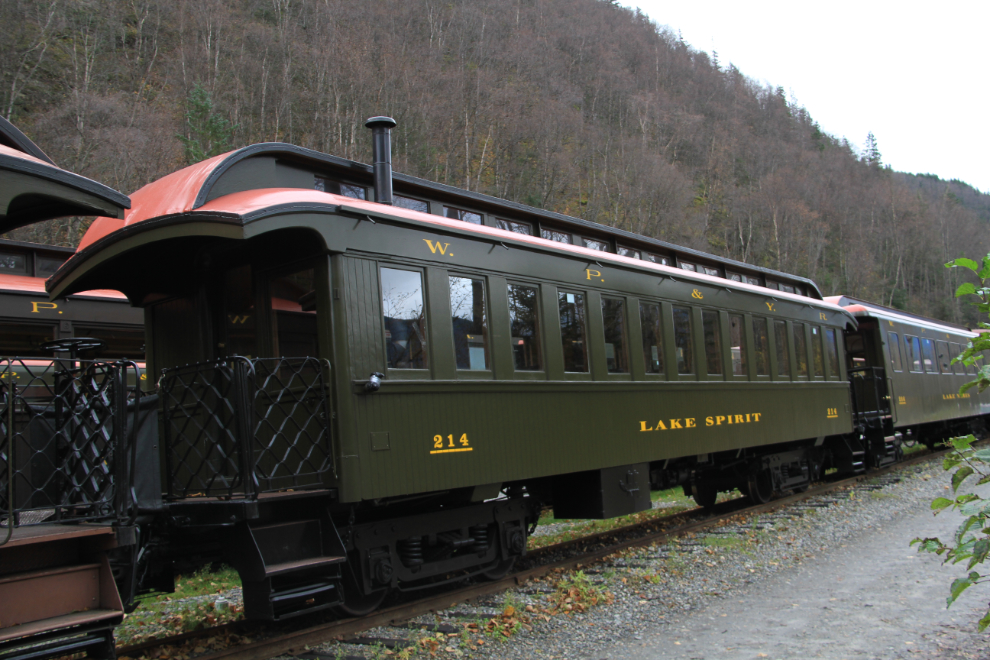
Car 380, the Aishihik River, is one of the 3 newest passenger cars, having been delivered in April 2012. It’s also one of the largest, at 53 feet long and with seating for up to 52 people.

By noon, I had absorbed about all I could process, and headed home. Just north of the White Pass summit, though, I caught a glimpse of some odd ice patterns on a large pond, and just couldn’t resist doing a U-turn and going back for a closer look. My first thought was that somebody had thrown a big rock in at just the right time as the ice was forming.
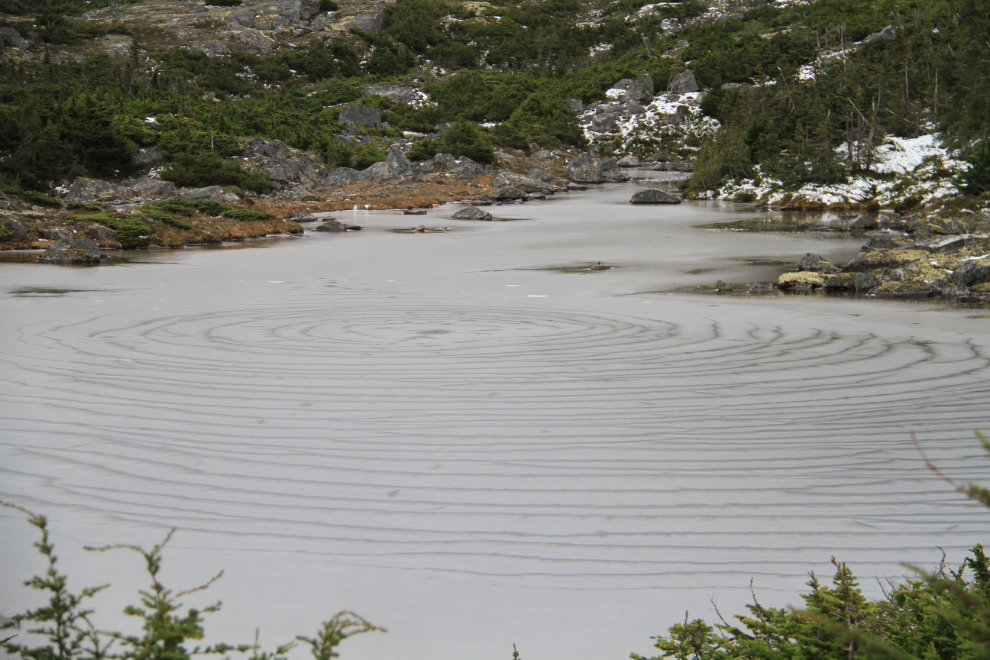
Monty is always game for another walk, and once we got down to the pond, there were some wonderful patterns to be found.
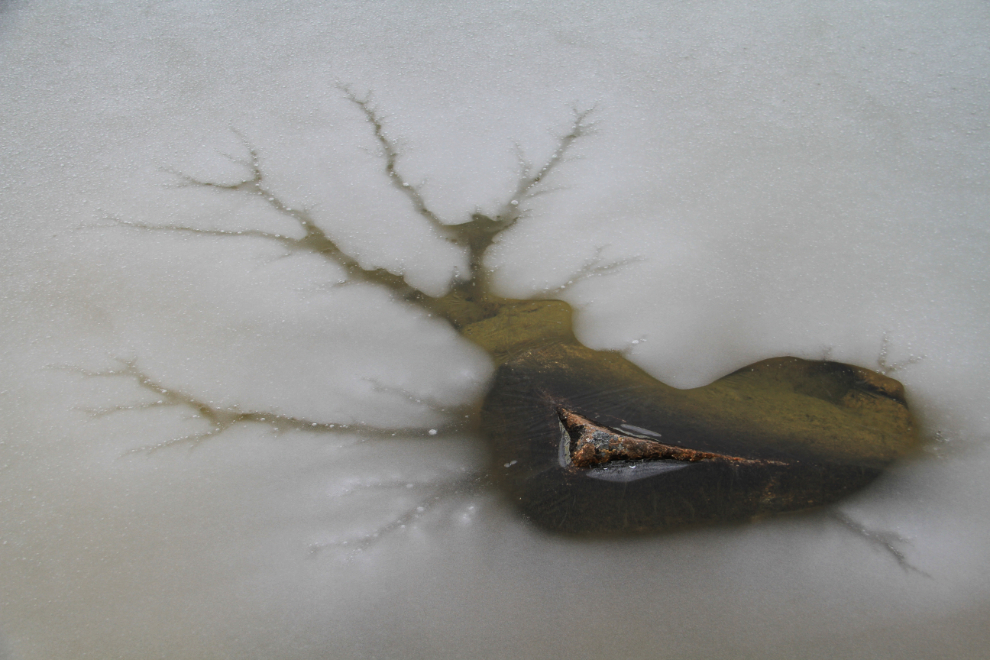
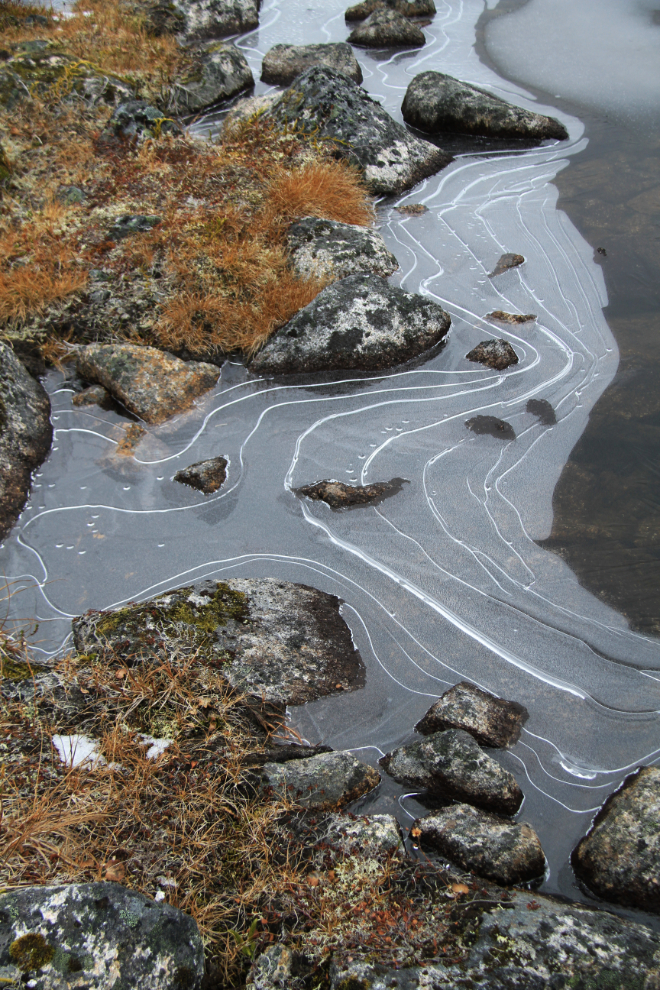
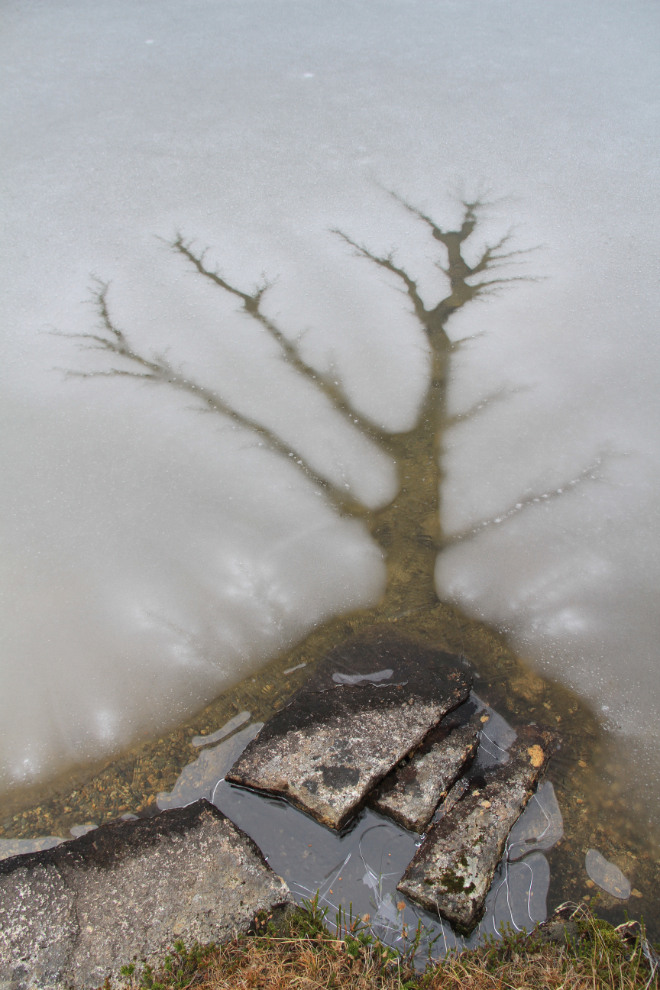
Another little mystery – I’ll just have to content myself with enjoying the patterns, without successfully analyzing why they formed.
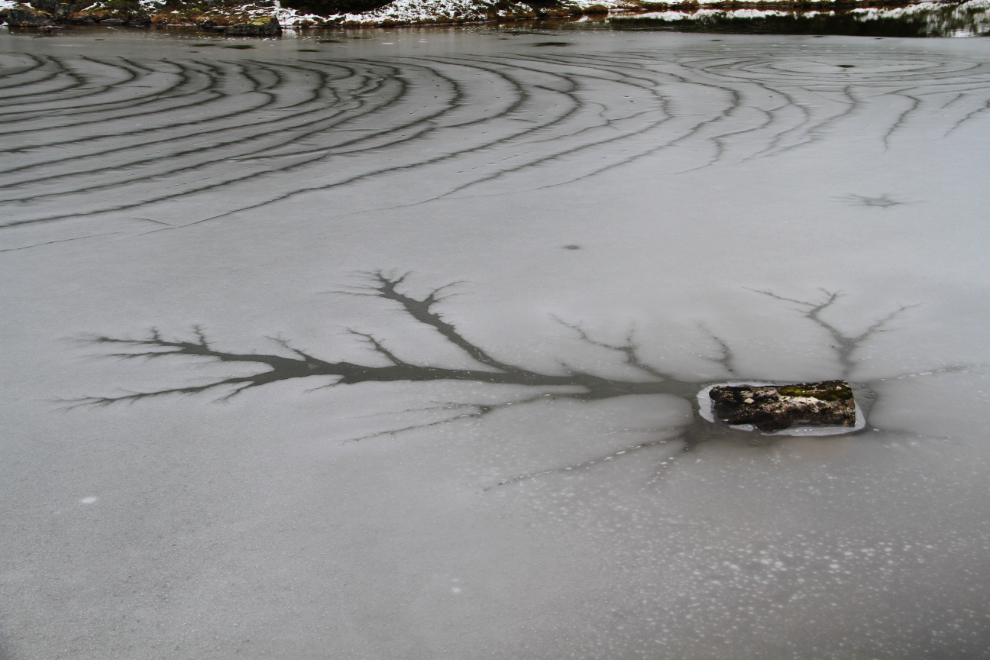
A few kilometers further along, another U-turn to see this pond. Maybe a couple of ducks landed as the ice was forming… 🙂
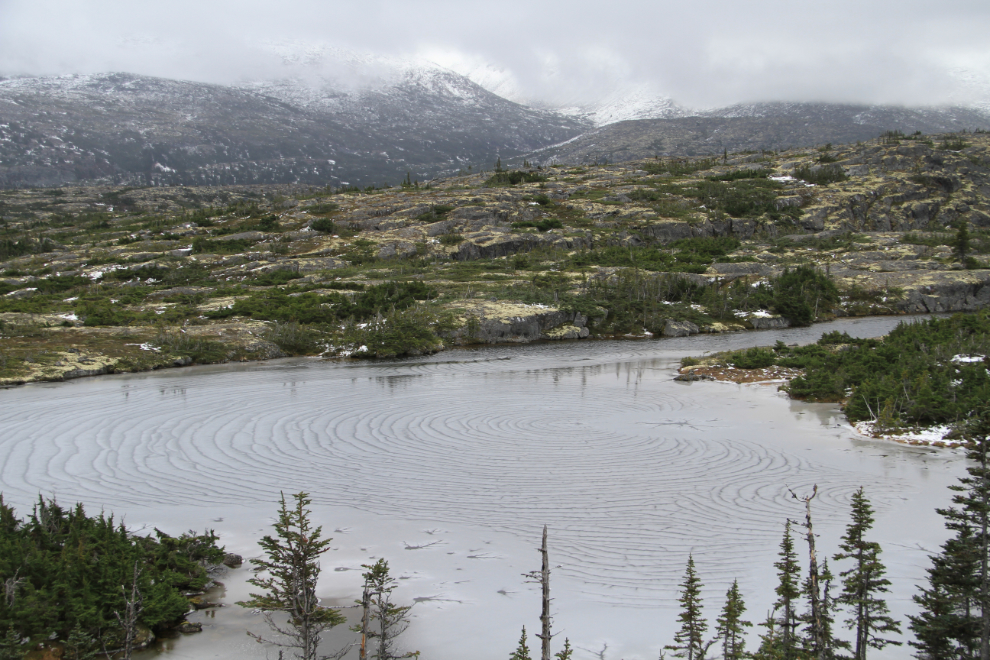
I got home in time to get back to work on my current house renovation project, completely rebuilding 2 bathrooms. With so many stories from the day bouncing around in my head, though, I wasn’t as focused as I should be. That may be the case today, too, as I got out of bed and started writing this post at 02:00!